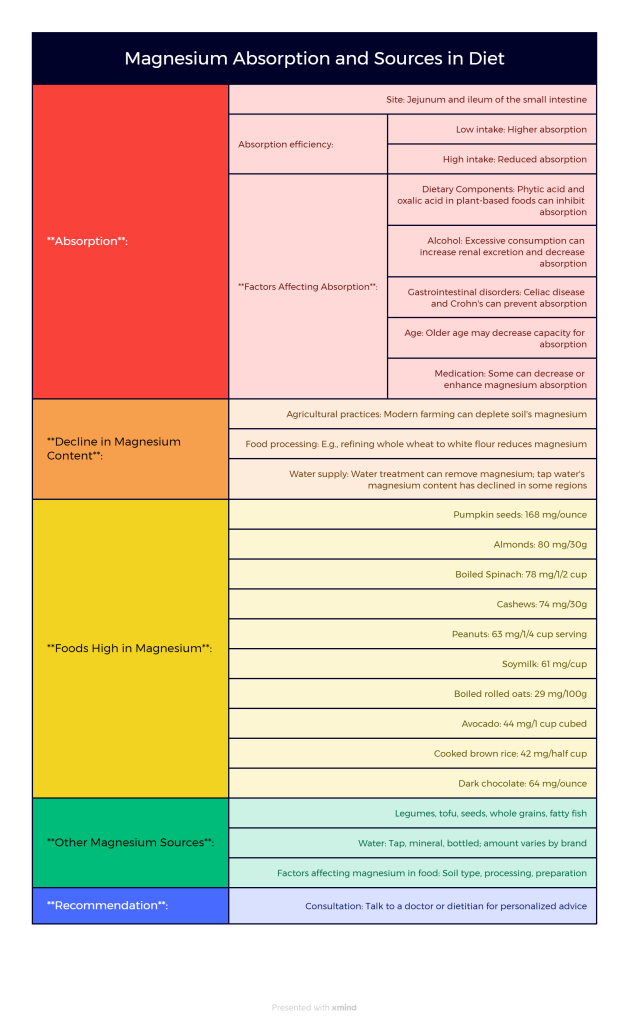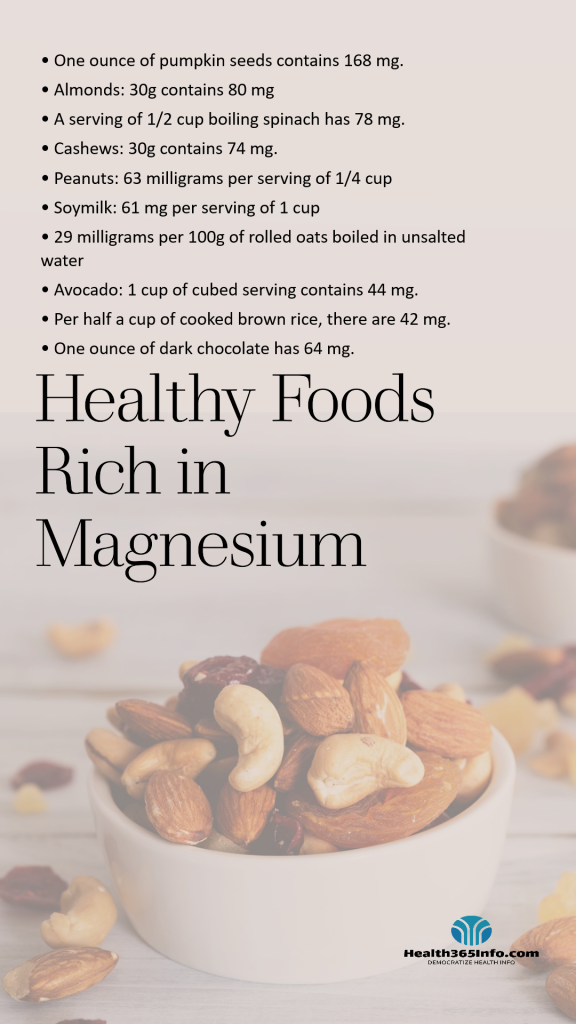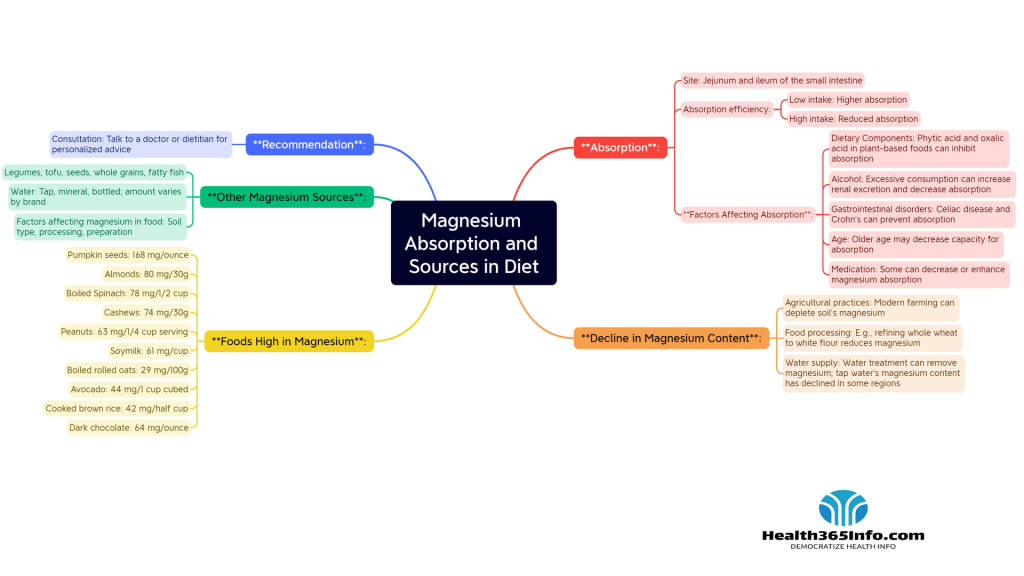
The body typically absorbs magnesium from food sources quite well. The jejunum and ileum, two parts of the small intestine, are where most magnesium is absorbed. Depending on the overall amount of magnesium in the diet, the effectiveness of absorption varies; when intake is low, the body tends to absorb more, and when intake is large, absorption rate declines.
Magnesium absorption can be influenced by a number of variables:
Some plant-based meals like spinach and beans include phytic acid and oxalic acid, which can bind to magnesium and prevent its absorption.
Increased renal excretion and decreased magnesium absorption can result from excessive alcohol drinking.
Celiac disease and Crohn’s disease are two gastrointestinal disorders that might prevent the absorption of magnesium.
Age: As people age, their capacity for magnesium absorption may decline, raising the possibility of inadequacies.
Medication: Some drugs, including proton pump inhibitors and some diuretics, can either decrease or enhance the absorption of magnesium.
Magnesium content in many food kinds has decreased over the past:
Agricultural practices: The heavy use of pesticides in modern farming techniques, for example, might deplete the soil’s natural magnesium. Because of this, crops raised on these soils can have lower magnesium levels than crops raised in the past.
Food processing: Grains can lose their magnesium content during processing and refinement. For instance, the majority of the magnesium in whole wheat is removed during refinement to create white flour. In addition, a lot of foods and drinks these days go through processing steps that can lower their magnesium level naturally.
Water supply: Historically, magnesium was mostly obtained from drinking water, however this mineral can be eliminated during water treatment. The amount of magnesium in some areas’ tap water has dropped over time.
Leafy green vegetables, nuts, seeds, legumes, whole grains, and select fruits are among the foods that contain magnesium. Following are a few examples of foods high in magnesium:
• One ounce of pumpkin seeds contains 168 mg.
• Almonds: 30g contains 80 mg
• A serving of 1/2 cup boiling spinach has 78 mg.
• Cashews: 30g contains 74 mg.
• Peanuts: 63 milligrams per serving of 1/4 cup
• Soymilk: 61 mg per serving of 1 cup
• 29 milligrams per 100g of rolled oats boiled in unsalted water
• Avocado: 1 cup of cubed serving contains 44 mg.
• Per half a cup of cooked brown rice, there are 42 mg.
• One ounce of dark chocolate has 64 mg. Legumes, tofu, seeds, whole grains, and some fatty fish are additional foods that are high in magnesium. Magnesium can also be found in tap, mineral, and bottled waters, but how much depends on the brand. It is significant to remember that different foods may contain different amounts of magnesium depending on the kind of soil, how it is processed, and how it is prepared. The ideal person to talk to if you have questions about your magnesium consumption is your doctor or a trained dietitian


KEY References
Spritzler, F. (2023, January 2). 10 Magnesium-Rich Foods That Are Super Healthy. Healthline. https://www.healthline.com/nutrition/10-foods-high-in-magnesium
Azoulay, A., Garzon, P., & Eisenberg, M. J. (2001, March 1). Comparison of the mineral content of tap water and bottled waters. Journal of General Internal Medicine; Springer Science+Business Media. https://doi.org/10.1111/j.1525-1497.2001.04189.x
Foods high in magnesium. (n.d.). Healthdirect. https://www.healthdirect.gov.au/foods-high-in-magnesium
Bonvissuto, D. (2019, October 2). Magnesium and Your Health. WebMD. https://www.webmd.com/diet/magnesium-and-your-healthOffice of Dietary Supplements – Magnesium. (n.d.). https://ods.od.nih.gov/factsheets/Magnesium-HealthProfessional













